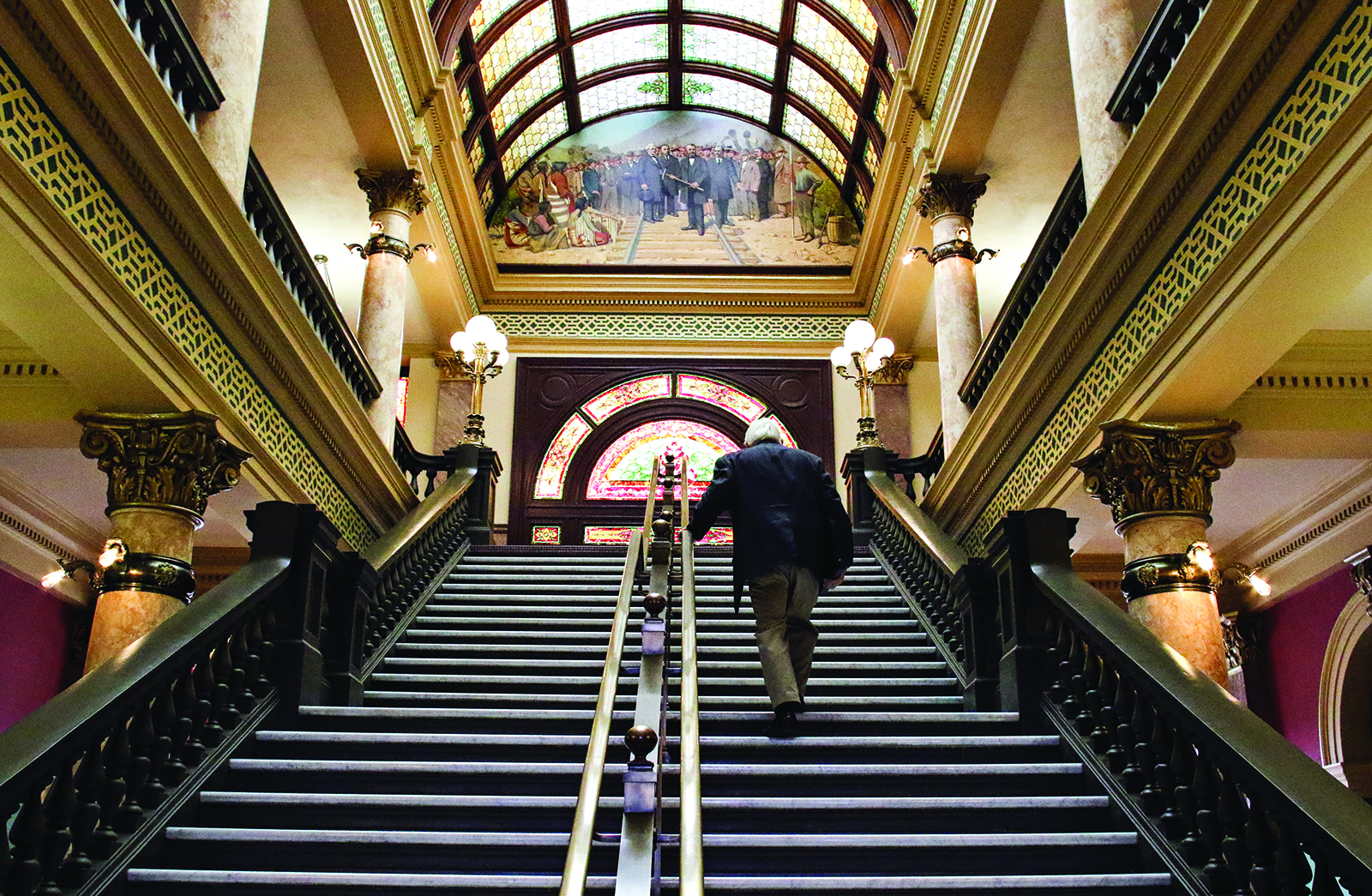69th Montana Legislature to Commence Next Week
Lawmakers in 2025 will be tasked with navigating a set of complex policy challenges, including rising property taxes, an overcrowded state prison and teacher retention issues
By Denali Sagner
Lawmakers are gearing up for the 69th session of the Montana Legislature, which will begin at the state capitol in Helena next week.
Though Republicans maintained their majority in both the state House and Senate this election cycle, Democrats picked up 12 seats in the Legislature with the help of newly drawn legislative maps. Republicans will hold 58 of 100 House seats and 32 of 50 Senate seats, leaving them with a slimmer, yet still powerful, majority when compared to 2023.
In the Flathead Valley, Democrats will send one state senator and one representative to Helena, doubling their presence from last session when Whitefish Rep. Dave Fern served as the Flathead’s lone Democrat. Fern will move over to the Senate and Democrat Debo Powers will serve in the House representing northern Flathead County.
Kalispell Republican Matt Regier, who currently serves as speaker of the House, has moved to the Senate and will serve as its next president. Regier, who has served four terms in the House, was elected Senate president in November, carrying on his family legacy in the chamber. His father, Kalispell Republican Keith Regier, retired from the Senate this year after eight terms in Helena.
In Flathead County, Sen. Carl Glimm, R-Kila, was reelected to the state Senate and incumbent Republican Reps. Braxton Mitchell, Amy Regier, Courtenay Sprunger and Terry Falk were reelected to the House. Republican newcomers Tom Millett, Lyn Bennett, Lukas Schubert, Steven Kelly, Ed Byrne and Tracy Sharp will also represent Flathead County in the state House. Republican Sens. John Fuller and Mark Noland will return to the Senate as holdover senators.
Lawmakers will be tasked with navigating a slate of policy questions as the state continues to face the effects of unprecedented in-migration during the pandemic, which destabilized the housing market and raised concerns over the ability of social service providers to meet growing needs.
After an influx of new residents drove up property values, Montanans experienced a bump in property taxes, with the median residential property owner seeing a 21% higher tax bill in 2023 than in 2021, according to the Montana Free Press.
Gov. Greg Gianforte on Nov. 15 released his $17.9 billion budget proposal, which he labeled the “Path to Security and Prosperity” and described as focusing on “shoring up the strong foundation of a prosperous society: economic freedom, safe communities, and strong families.”
The governor’s budget hinges on tax cuts, including a reduction to the state’s top-bracket income tax rate, expansions to the earned income tax credit and a lowering of the state’s business equipment tax. The governor’s proposal also seeks to boost pay for Montana Highway Patrol troopers by $7 million, invest $150 million in building 500 beds at the Montana State Prison, and put $250 million into funding a public safety commission.
In response to rising taxes, Gianforte last January convened the Governor’s Property Tax Task Force, a 23-member committee that, in August, delivered recommendations for how to lower property taxes. In its report to the governor, the task force recommended proposals, including reducing tax rates on primary residences while raising rates for short-term rentals such as Airbnbs — a version of the Homestead Exemption.
Other recommendations proposed by the task force include requiring that new voter-approved levies receive 60% of the vote to pass, and replacing school district levy rates with county-wide base levies. Amid rising property taxes, school districts across the state have struggled to pass levies, forcing layoffs and budget cuts, including in Kalispell, and low pay and high housing costs have made recruiting and retaining teachers difficult.
The state’s rising population has also hamstrung social service and law enforcement providers, leaving Montana with an overcrowded state prison, understaffed sheriffs’ departments and rising homelessness.
While Republicans maintain control of the Legislature and the governor’s office, debates over rising property taxes and social services last session revealed rifts between the executive branch and the wide GOP tent in the Legislature.
Gianforte in his endorsements last spring declined to endorse Matt Regier in a Republican primary and backed a number of moderate Republicans against ultra-conservative challengers.
After being elected Senate President, Regier said, “We can work with the executive branch, but we do not work for the executive branch. And certainly, I believe the executive branch cannot be picking our leadership.”
Lawmakers will also face a new landscape around reproductive healthcare after voters in November enshrined a right to abortion in the state Constitution. Republicans in 2023 introduced 13 bills attempting to limit access to abortion, an uptick from the seven anti-abortion bills brought the prior session, with Flathead area Republicans standing at the forefront of the anti-abortion movement. Yet their ability to further restrict abortion access in the state will be hamstrung by the passage of the constitutional amendment.
Optional legislator training will take place on Jan. 3, which will include “Law School for Legislators,” a series of presentations from Lt. Gov. Kristen Juras, Montana Supreme Court Chief Justice-elect Cory Swanson, Attorney General Austin Knudsen, University of Montana Law School Dean Elaine Gagliardi, and U.S. Attorney Jesse Laslovich.
After a lunch sponsored by the University of Montana Law School and Montana State Bar, lawmakers will partake in “budget basics” and a floor session refresher.
The legislative session will begin on Jan. 6, with floor sessions in the House and Senate beginning at 12 p.m.
Correction: Democrats picked up 12 seats in the Legislature, not 11.